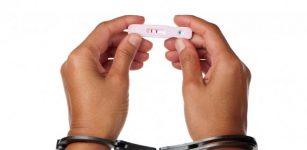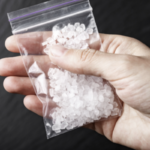Special Problems Faced by Women in Prison

According to the Australian Bureau of Statistics, the flow of women into Australian prisons, and the amount of time they spend in there, has been steadily increasing for many years.
From 1995 to 2002, the imprisonment rate for women increased by 60%. This increase has been influenced by changes in criminal behaviour, legislation, policing, prosecution, conviction, sentencing, and the availability of appropriate correctional facilities.
Women inmates are a complex group of disadvantaged people with specific needs relating to education, health and emotional support. The 2011 NSW Inmate Census found that a “typical” female inmate tended to be young, poorly educated and unemployed, and that they were most likely to have committed property and illicit drug offences.
Despite the increasing number of women in prison, women made up just 8% of our prison populations in 2015. Smaller numbers overall means there are limited facilities and programs designed specifically for women. This often places women in prison in a vulnerable position, where access to health and emotional support services is difficult and they are geographically further away from the community they come from, making it more difficult for visitors to travel to see them.
Deidre Hyslop, who was the Principal Advisor for Women Offenders at Corrective Services NSW, told the Australian Women’s Weekly that women face more isolation as a result of a prison sentence:
“One of the biggest issues is rejection from family and community. I think it’s because they’ve committed a criminal offence—but then also an additional offence against society’s views of what being a woman is.
“The men get huge support from family. [At Long Bay prison] there would be trails of women coming to visit; partners, mums, aunties, and children. But the women inmates don’t get the same thing. More often it’s friends they met in custody coming back to visit them.”
Women in prison are prone to suffer more health problems than male inmates. They are more likely to experience mental health issues, with almost 40% having attempted suicide, they have substance abuse problems and associated infectious diseases like hepatitis C, as well as higher rates of serious and chronic conditions like heart disease, diabetes, and asthma.
Aboriginal and Torres Strait Islander women make up only 2% of the general population, yet they represent 30% of the female prison population. Men and women from these communities experience devastating health problems— both in and out of the prison setting.
Women also require specific care relating to pregnancy, birthing, and parenting. The 2009 Inmate Health Survey reported that just under half of the women in Australian prisons are mothers of children younger than 17 years of age.
Pregnant Inmates
Women who are pregnant while in prison are provided with ante-natal and post-natal care. Health services for pregnant inmates is usually provided under shared care arrangements with local hospital maternity units, where women can also be admitted for giving birth if they’re still incarcerated.
The Standard Guidelines for Corrections in Australia states that all inmates should be provided with access to health care, to the same standard as in the community, in response to need, with an appropriate range of preventative services, and promoting continuity with external health services upon release.
However, a 2014 study by Jane Walker and others, funded by the National Health and Medical Research Council of Australia, found that women who are pregnant while in prison were less likely to have initiated pregnancy health services before 20 weeks, and less likely to be booked into hospital for the birth, than women in the general population.
The research showed babies born to mothers who have been in prison during pregnancy are more likely than even other disadvantaged women to be born pre-term, have low birthweight, be admitted to hospital, and spend time in intensive care.
This study was unique in that the control group were similarly disadvantaged, comprised of other women who had been to prison, but were not incarcerated while pregnant. The study concluded that prison health services are not able to deal with the complex factors that cause women inmates to suffer disadvantage throughout their lives.
Mothers and Children in Prison
The Department of Social Services says there is no data about the number of children who have a parent in Australian prisons. In 1999, Dr Michael Levy, from the NSW Corrections Health Service, reported that on any given day, more than 11,000 children in NSW had at least one parent in prison. Due to increasing prison rates, that figure is probably much higher today.
Sadly, there is insufficient research into families where a primary caregiver is incarcerated, which makes it difficult for correctional facilities to plan and implement effective support and education programs for parents in prison. These programs are vitally important for developing life skills that can break intergenerational cycles of inappropriate parenting, dysfunctional family relationships and imprisonment.
Correctional Services NSW acknowledges the information gap, but recognises the importance of preserving families to the rehabilitation of inmates and their children’s future nonetheless. In an effort to improve family outcomes for these vulnerable families, NSW prisons have support services and programs that engage parents and children in appropriate activities.
It is accepted that mothers play a crucial role in the lives of their babies and young children. Prison programs are important for providing women with opportunities to acquire new parenting skills in a supervised environment that offers guidance and support.
Each of Australia’s states and territories apply their own legislative framework to the correctional facilities they administer. All jurisdictions provide for the accommodation of young children to be with mothers in prison no other primary carer is available.
The Standard Guidelines for Corrections in Australia states that if a facility does allow babies and children under school age to reside with their primary caregiver in prison, “comprehensive and well structured policies and programmes should be developed where the interests of the children are paramount.”
In NSW for example, children who are assessed as being able to reside with their mother in prison can be accommodated full-time in a rural and domestic setting in purpose-built minimum-security Jacaranda Cottages adjacent to Emu Plains Correctional Centre and at Parramatta Transitional Centre. Children of school age up to 12 years may be accommodated at weekends and during school holidays.
Young mother, Keisha, told the Australian Women’s Weekly that a routine health test on admission to prison revealed she was pregnant, and that she gave birth under guard at a nearby public hospital. She said she feels lucky to have been accepted into the mothers and children’s program, and that:
“My life’s good at Jacaranda… because I have been able to bond with my newborn son.”
The assessment process for the residential program is focused on the best interests of the child, and applications are determined by a Mothers and Children’s Committee which includes representatives from the Department of Human Services, SHINE For Kids, and Justice Health. Final decisions are made by the Correctional Services NSW Commissioner.
Children entering prisons to spend time with their mothers is a contentious issue. Many people argue that any prison environment is no place for children.
Whether children spend time with their mothers in prison facilities or not, they are usually disadvantaged by having a parent sent to prison. A research paper titled Meeting the Needs of Children of Incarcerated Mothers: The Application of Attachment Theory to Policy and Programming, published by professor Dianna Kenny of the University of Sydney in 2012, states that:
“Children of women prisoners are an under-studied and under-resourced group of young people who are at serious risk of developmental, behavioural, educational and psychiatric problems. When a mother is incarcerated, the child may lose not only her mother, but also her home, school, friends and familiar community if it becomes necessary to re-locate the child for care purposes. These young people are therefore themselves victims of (their parents’) crimes whose needs are rarely considered in the justice and welfare systems.”
What is agreed is that programs and policies aimed at preserving the family relationships of women inmates should always centre on the best interests of their children.






